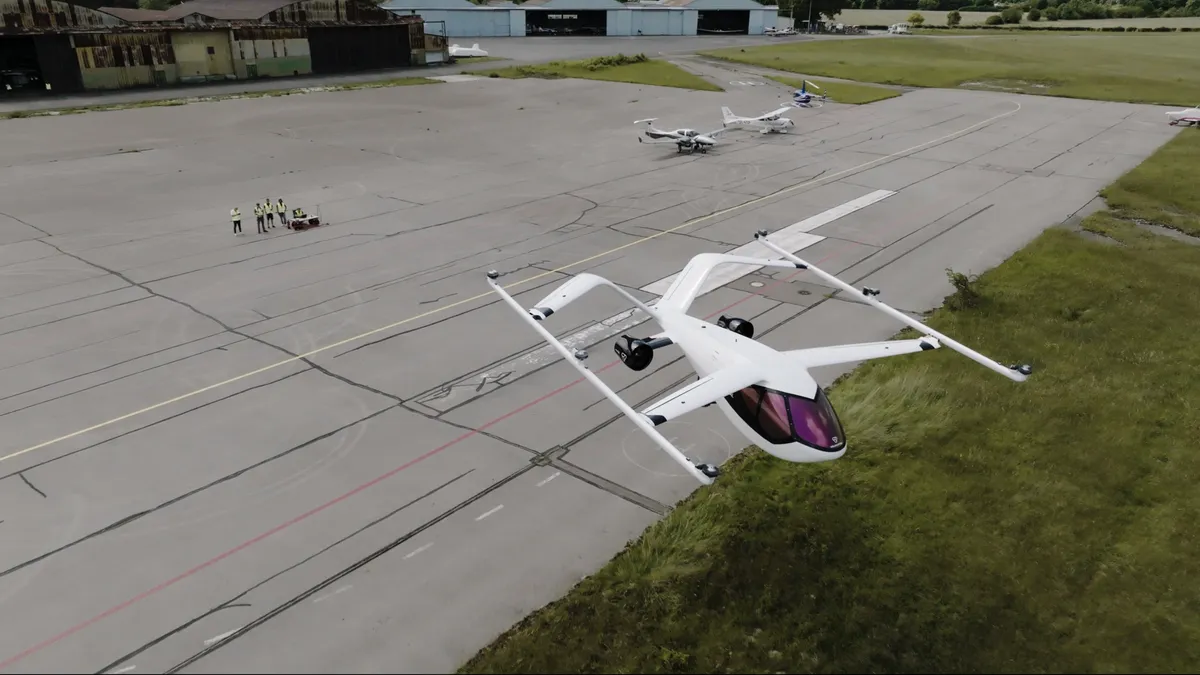Dive Brief:
- Electric vertical takeoff or landing aircraft will fly commercially by 2024 and could become mainstream in the 2030s, acting as a ride-hailing and ride-sharing service within and between cities, according to a Deloitte report released today.
- The consulting firm sees EVTOL as a way to address road congestion, improve productivity and increase accessibility for rural and disadvantaged communities.
- But a lack of first and last-mile connectivity and potential negative community response to the growing presence of advanced air mobility operations could slow adoption, said John Coykendall, principal for global and U.S. aerospace and defense leader at Deloitte and one of the report authors.
Dive Insight:
Some 350 companies around the world are developing EVTOL aircraft concepts and designs. Four such companies also went public last year, including Archer Aviation, Joby Aviation, Lilium, and Vertical Aerospace. The industry saw $5.8 billion in investments in 2021 alone, more than the total investments of the previous decade.
“It's picking up momentum,” said Coykendall.
Taxis and ride-sharing services such as Uber and Lyft are in the crosshairs of the nascent EVTOL industry, according to the report. “Our analysis shows advanced air mobility would be three to five times faster” at a comparable cost and with fewer carbon emissions, Coykendall said.
The report highlighted a 20-mile trip between John F. Kennedy International Airport and New York City that would take just 15 minutes in an EVTOL aircraft versus an estimated 44 minutes by taxi or ride-hailing vehicle.
"There are real use cases out there for business travelers such as myself and for high net-worth individuals,” said Coykendall.
Seleta Reynolds, general manager of the Los Angeles Department of Transportation, speaking at the SXSW conference in Austin, Texas, this year, said that cities must be included in the conversation around advanced air mobility. She said airspace should be managed for the public good and that funding should enable cities to dedicate resources to the new transportation mode. Cities will resist investing in advanced air mobility if EVTOLs only serve affluent travelers, she warned.
Initially, Coykendall expects EVTOL operators to use existing airports and heliports. That means connections with ground transportation will be “key to success,” he said, adding that as EVTOLs become commonplace, airfares could come down, making them more accessible to everyday users. However, he also acknowledged concerns about noise and the visual clutter of EVTOLs in city skies.
Four to six-seater aircraft will be used for intracity trips, according to the report, which states that the industry’s “ultimate objective is to become a transportation system for mass transit, operating between urban, suburban, and rural areas.”
Volocopter’s four-seater VoloConnect aircraft completed its first flight in May, the company announced today. Expected to enter service in 2026, it is designed for routes such as Burbank to Huntington Beach, California, a distance of just over 40 air miles.
“Advanced air mobility should be a clear winner over other modes of transportation,” said Coykendall. The Deloitte report makes no projection on the size of the market or the number of EVTOL aircraft that could be operating in the coming decade. Coykendall explained: “How do you predict the uptake on something that nobody's ever had an option to use before?"












